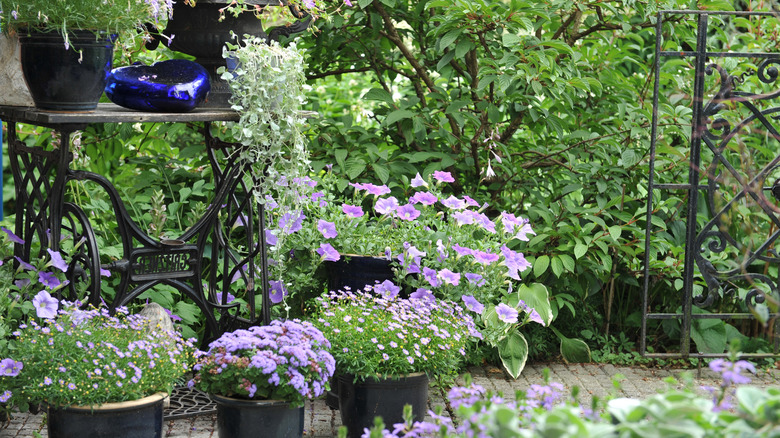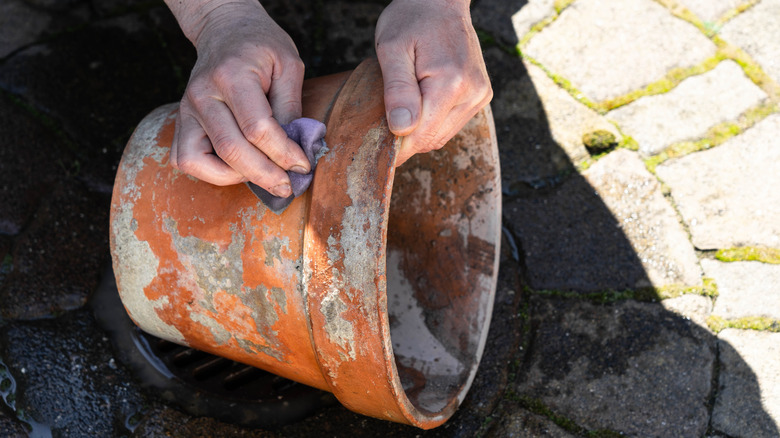For Healthy Container Annuals, Be Sure To Do This First
We may receive a commission on purchases made from links.
Planting summer-blooming annual flowers in containers is a great way to spruce up your porch, patio, or garden with season-long color. Many annuals will flower all summer long if they're watered consistently and deadheaded regularly. Some gardeners start potting up annuals in spring, starting with pansies and other early bloomers, but this can be done any time in summer, and in the fall, you can add late-season bloomers like mums and asters. But before planting spring, summer, or fall annuals in containers, there's one important thing you should always do: thoroughly clean your containers.
Always ensure that you wash your containers thoroughly, whether they're used or new. Do this for containers made of any material, whether ceramic, terracotta, wood, metal, or plastic. The reason you want to do this is to remove any potentially harmful bacteria, fungi, or pathogens that might affect the health of the soil and your plants. Even brand-new containers can contain chemical residue that has accumulated during shipment, while they were in a warehouse, or from packaging.
Used containers should always be cleaned before reusing them. They have the potential of holding onto old soil fragments from previous seasons that could cause disease to occur in both the new soil and your annual flowers. Used planters could also contain pests, which will infect your new annuals if they aren't properly removed. To be on the safe side, cleaning and lightly sanitizing planters thoroughly before adding new soil and plants should be part of your basic gardening chore list. This is a pretty straightforward task, but there are a few tricks and tips to make it easier.
How to clean planters
Cleaning your planters is fairly easy, but depending on how many you have, you'll need to set aside a bit of time to allow them to dry before adding soil and planting in them. This task is best done outdoors, but for smaller pots, you may be able to use your kitchen sink. For this task, you'll need some mild soap or bleach and a source of water: a garden hose with a multi-setting spray nozzle is handy for this project, as is a bucket for soaking.
First, gather all your planters together, working in batches if necessary. Smaller pots can be placed in a bucket, pail, or washtub. Fill this up with water and add a bit of mild soap such as Dawn Liquid Dish Soap. Let the pots soak a bit, then use a sponge to gently wash them inside and out. Some pots might need some extra scrubbing, but keep in mind when cleaning old terracotta pots that they look good with a bit of their aged patina left intact.
Rinse them off with a hose, and to fully disinfect, let them sit in a bleach solution (one part household bleach to nine parts water) for ten minutes. Be sure to thoroughly rinse afterwards to remove all traces of bleach. After washing and sanitizing, let pots dry thoroughly before adding soil. Planters made of terracotta or wood (like wooden whiskey barrels) will dry more slowly than metal or ceramic, so if you can leave them in a sunny spot, this will speed up the process. That's it! You're ready for planting annuals.

